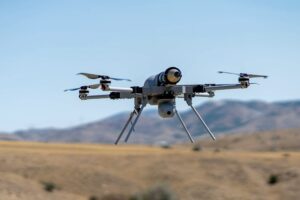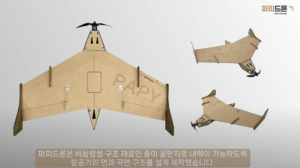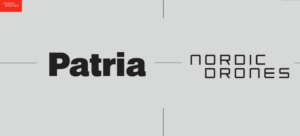It’s one thing if it’s a cool party trick, but what about whether it’s actually useful? A new 2024 study digs into public perception around drone delivery, and in particular how valuable people think it really is.
The results might surprise you. Because while drones are seen as a potential game-changer in certain areas such as emergency response, their appeal for everyday drone deliveries is more nuanced.
That’s according to research funded by UK Research and Innovation’s Future Flight Challenge and delivered by Innovate UK and the Economic and Social Research Council (ESRC). The survey portion of the research included a survey of 3,279 adults aged 18 and older living in the U.K. The survey, which was carried out by YouGov, was conducted in March and April 2024, and it was published in July 2024.
What do people think about drone delivery in 2024?

Where the general public sees drone delivery as most useful
As a whole, the majority of survey respondents see value in drone delivery in all sorts of scenarios. But more people see drone delivery as valuable in some scenarios versus others. Here are some of those nuances:
Drone delivery may be more valuable depending on the goods they carry

People think of drone delivery as more useful when the drones are bringing critical goods, like medical supplies, blood samples or tests. That’s as opposed to drones delivering your standard mail and packages. In the survey, 85% of respondents said using drones to deliver medial supplies, blood samples of tests offered a net benefit, with just 5% saying such a use case was outright not beneficial.
Meanwhile, only 77% found value in drones delivering mail, parcels or packages to local collection hubs, with 10% saying it was flat out not useful.
That figure is slightly higher than the 76% who found it useful for drones to deliver directly to individual households. (13% called drone delivery to individual households flat out not useful).

Perhaps in anticipation of such a response, many drone delivery companies have heavily touted their medical deliveries. In fact, Zipline — which is the world’s largest drone delivery company and recently crossed the 1 million drone delivery milestone — focuses primarily on medical deliveries in developing countries. It’s 1 millionth delivery consisted of two bags of IV fluid flying from Zipline’s distribution center in Ghana’s Western North Region to a health facility nearby.
Meanwhile, Wing is working Apian, which is a medical drone startup founded by a team of doctors from the UK’s National Health Service (NHS) and perhaps coincidentally, ex-Google employees. Together, they’re building a drone delivery network that’ll shuttle medical supplies from pharmacies and other healthcare providers to homes in South Dublin, Ireland.
Yet both of those two companies also deliver stuff (as well as restaurant meals). Both Wing and Zipline partner with Walmart to send stuff to customer’s homes. And yes, you can check out the time I got Powerade and Alfredo sauce delivered via a Wing drone using goods ordered from Walmart.
Zipline just added a few major restaurant partners including Sweetgreen, Panera Bread and Jet’s Pizza. Some companies like Flytrex focus on food deliveries entirely (Jersey Mike’s is one of their biggest clients).
Drone delivery may be more valuable depending on the place
As that chart above indicates, people are generally more likely to see drones as beneficial in rural and remote areas compared to urban and suburban ones. Of the survey respondents, 74% said drone delivery for medical supplies had value in remote areas, and 75% said they had value in rural areas. That’s much higher than the 67% of people who considered drone delivery valuable in suburban areas, or the 63% people who considered it valuable in urban areas.
While most people considered home deliveries overall less valuable than medical deliveries, repsondents still agreed that home deliveries were at least more valuable if the drones were flying to rural areas. Here’s how many respondents considered the use of drones for home deliveries to be valuable, broken down by type of region:
- Remote/isolated areas: 61% of respondents find drone delivery valuable
- Rural areas: 54% of respondents find drone delivery valuable
- Sub-urban areas: 36% of respondents find drone delivery valuable
- Urban areas: 30% of respondents find drone delivery valuable
This perhaps makes sense. If you live in a city and need milk, there’s probably a corner store a block away. If you live in a rural area, it could be a long drive for a single carton of milk.
And sometimes remote areas aren’t really that remote as the crow flies, but they might be remote because of some sort of natural barrier like a river. Minimal infrastructure might mean driving for miles to get to the bridge to cross the river — even if the grocery story is really just on the side. Drones don’t need a bridge to cross a river, making them a valuable tool to deliver milk in that scenario.
Still, it really proves people care about what the drones are carrying. More people (63%) find value in drones delivering medical supplies to urban areas than even the number of people (61%) who see value in drones delivering home goods to rural areas.
Texas has thrived as a hub for drone delivery. In fact, it’s earned the title of “Drone Star State.” That’s for a few reasons, including a generally favorable climate and flat terrain, but also supportive political and social environments.
Age differences
There is also some age variability, with younger people generally seeing more value in drone delivery in older folks. For example, 39% of people between the ages of 18 and 34 said they found value in drone deliveries to urban areas, while just 21% of people 55 and older said the same.
How likely is drone delivery in the next decade?

Remember back in 2013 when Jeff Bezos announced on national television his goal to make Amazon drones a reality? That’s hardly the case. Only this summer did Amazon share details about plans to launch tests in the Phoenix Metro Area. Its only other U.S. operations are limited to College Station, Texas.
Other drone companies are faring better, with actual customer deliveries on the books — and new innovation ongoing. For example, Zipline has big plans to launch its Platform 2 aircraft in Texas in 2024.
But even still, the public isn’t convinced. According to UK Research and Innovation’s Future Flight Challenge survey, just 18% think widespread drone delivery to individual households will be very likely within the next 10 years. 53% think it is at least somewhat likely.
That optimism is far lower than the public perception of the likelihood of other drone projects like inspections, surveillance and farming.
Other public ideas about drone delivery
For what it’s worth, just because the public doesn’t exactly think of drone delivery being useful doesn’t mean they hate the idea. In fact, a 2019 survey conducted by Virginia Tech researchers found that nearly 9 in 10 people are eager for delivery drones to help run errands for them.
And actual customers have vouched it’s good. DroneUp, which is a U.S.-based drone delivery service provider, surveyed customers who used its drone delivery service something in the last quarter of 2023. The survey found that 90% of customers gave their delivery experience a positive review, citing how packages arrived safely, on time and in perfect condition. The survey also found a benefit for businesses. In fact, 36% of survey respondents admitted that they added additional items to their cart — suggesting that drones may be a key driver of incremental purchases.
And in terms of stimulating the economy, there’s perhaps nothing more useful about drone deliveries than that.
The post Do people think drone delivery is actually useful? 2024 study has surprising results appeared first on The Drone Girl.





